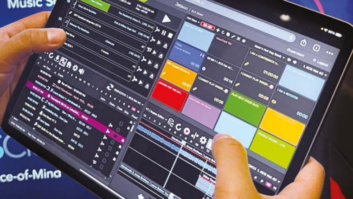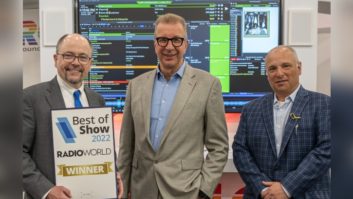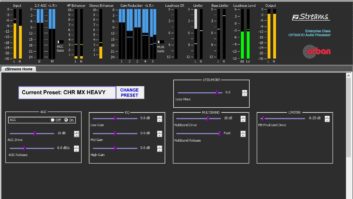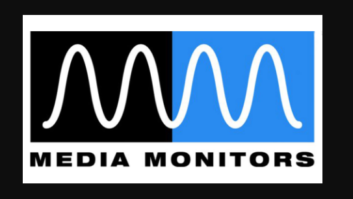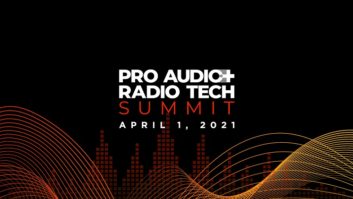(click thumbnail)Philippe GeneraliQ. What’s new that you will show at the 2008 NAB Show and that radio broadcasters should look for there?
We continue to beef up our new music scheduling system Gselector, with its patented Goal Scheduling technology, by making it more hybrid. Rule based concepts are now included from our classic Selector program. This has significantly boosted the adoption of our system: we currently have two to three clients per day migrate over to GSelector.
The first interactive interface between NexGen Digital, our leading automation system and GSelector has been completed. Each system is independent, yet the level of interactivity between them is unprecedented in the industry.
At our booth, we reveal our brand new digital audio system for radio stations (code name: Bengal). Built from the ground up using the most modern and reliable technologies today: .NET and the fantastic graphical subsystem WPF. This is the future of automation.
And we will be introducing to our international customers and prospects our brand new traffic system called Aquira. There again, the most advanced concepts have been used to build the traffic system of the future from the ground up. Aquira is the most powerful and scalable traffic system ever created.
Q. Why is the recent Media Monitors/Arbitron announcement significant?
At RCS and Media Monitors, we’re passionate about radio. Almost 30 years ago, we invented music scheduling with the help of the first personal computer. That changed the lives of many programmers who, at that time, relied on shoe boxes full of index cards to rotate their music. The agreement with Arbitron continues the RCS tradition of groundbreaking innovation for the programming department. Which program director has not dreamed of visualizing the audience’s reaction to his/her programming strategies? We are talking about the “real thing” that is the direct result of what was on the air. With Audience Response, you can see whether the members of your PPM panel, your actual “judges,” are listening – or not! Next, we empower the programming staff by letting them injest these findings right into the music rotation goals in GSelector. This is the best way to program your station intelligently. RCS and Media Monitors will be there to help the programmer get the most out of the PPM data with easy to use software.
Q. Do your company’s “niches,” i.e. scheduling and automation on the content output side, monitoring/verification on the other end, affect each other? In other words, has the ability of users to get such enormous data about what actually played, had an impact on how radio stations buy and use your delivery products?
Absolutely. In 2008, radio is all about accountability. When an engineer, a sales person or program director makes choices, they want to make the all the right decisions for very good reasons. As a program director, if you play this song more often, or change your clock to move that morning bit 30 minutes later in the hour, it is because you have the proof that it is better for the station, for the audience and therefore for the advertiser. Why rely on guess work, assumptions or hunches, when you now can find the facts? You can see if the audience likes it or not. You know it, your boss knows it and ultimately the advertiser will know it. Between RCS and Media Monitors, we help you see the consequences of your actions. Programming a station without knowing the audience response to your station would be like driving a car with a blindfold.
Q. Your iSelector is a personalized online player, streaming a radio station’s content to listeners who can customize it. Some people think online is the only place where radio will be able to see increased revenue anytime soon. What are your streaming clients telling you about that part of the market? Is it growing, has it plateaued?
Streaming audio of your terrestrial broadcast is just another transport for the content. But with WiMax around the corner, streaming will be mobile and soon, in your car. That will certainly change the rules of the game. All of a sudden, the number of formats and choices available will be virtually unlimited.
We have two ways to handle streaming. The first one is called RCS RadioShow, which lets the station match content – visuals, graphics, artist and song notes, RSS feeds, concert information, etc – to what is playing on the air in either a web display or on a cell phone. This is powered by Selector in concert with the automation system of the station.
The other system that we have a patent on is called iSelector. With all the available streaming content, the ultimate format is YOUR OWN exclusive format; the one you carve out by picking your songs and determing the rotations. This is what iSelector lets you do: it is a consumer-grade music scheduling system, under supervision and control of the radio station brand. The consumer just has to say: I want more of that artist, or less of that song and the system will adjust the rotation automatically for that listener only.
Q. Where are you based, and how many employees do you have?
We are based in White Plains, N.Y., with offices in over 100 countries with more than 500 employees.








